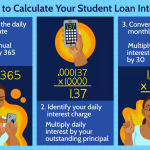Introduction
Investing in education is crucial for personal and professional growth, but the cost of tuition can be a barrier for many students. Fortunately, affordable student loans provide a viable solution, offering financial assistance to pursue higher education without breaking the bank. In this guide, we’ll explore how you can finance your education with ease through affordable student loans.
Understanding Student Loans
Importance of Student Loans
Student loans play a pivotal role in making higher education accessible to a broader range of individuals. They bridge the gap between tuition costs and available funds, enabling students to pursue their academic aspirations.
Types of Student Loans
There are various types of student loans available, including federal loans, private loans, and parent loans. Each type has its own terms, eligibility criteria, and repayment options, allowing students to choose the option that best fits their needs.
Qualifying for Affordable Student Loans
Eligibility Criteria
To qualify for student loans, applicants typically need to meet certain eligibility criteria, such as enrollment in an accredited educational institution and maintaining satisfactory academic progress. Additionally, some loans may require a credit check or cosigner.
Financial Aid Options
In addition to loans, students should explore other financial aid options, such as scholarships, grants, and work-study programs. These sources of funding can help reduce the need for loans and minimize overall educational costs.
Comparing Loan Options
Researching Lenders
Conduct thorough research on lenders offering student loans, comparing interest rates, fees, repayment terms, and customer reviews. Look for reputable lenders with a track record of providing affordable and transparent loan options.
Exploring Federal Loan Programs
Federal student loans often offer more favorable terms and borrower protections compared to private loans. Explore federal loan programs, such as Direct Subsidized Loans, Direct Unsubsidized Loans, and PLUS Loans, to take advantage of these benefits.
Applying for Student Loans
Completing the FAFSA
To apply for federal student aid, including loans, students must complete the Free Application for Federal Student Aid (FAFSA). This form collects information about the student’s financial situation and determines eligibility for federal aid programs.
Submitting Loan Applications
For private student loans, submit applications directly to the lender, providing all required documentation and information. Be prepared to provide details about your academic program, enrollment status, and financial need.
Managing Student Loan Debt
Borrowing Responsibly
While student loans can be a valuable resource, it’s essential to borrow responsibly and only take out what you need to cover educational expenses. Avoid overborrowing to minimize the burden of student loan debt after graduation.
Exploring Repayment Options
Familiarize yourself with the repayment options available for your student loans, including income-driven repayment plans, deferment, and forbearance. Choose a repayment plan that aligns with your financial situation and goals.
Conclusion
Affordable student loans offer a lifeline for students seeking to finance their education without undue financial strain. By understanding the types of student loans available, qualifying for financial aid, comparing loan options, and managing debt responsibly, students can pursue their educational goals with confidence and ease.


